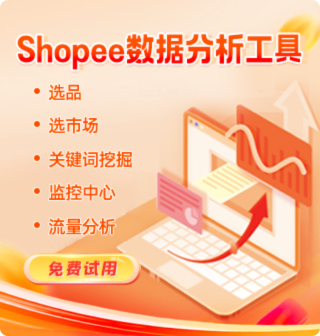-
用户101****7638
Understanding Shopee Fees: A Comprehensive Guide for Sellers
Shopee has become one of the leading e-commerce platforms in Southeast Asia, attracting millions of merchants eager to tap into its extensive user base. While Shopee offers an accessible marketplace with lots of promotional opportunities, understanding the fee structure is crucial for sellers to maximize profitability and manage costs effectively. This article provides a detailed overview of Shopee fees, including commission, transaction costs, and value-added services, along with practical tips for sellers to optimize their financial planning.
1. Overview of Shopee’s Fee Structure
Shopee operates on a marketplace model where the platform earns primarily through fees charged to sellers. Unlike some marketplaces that charge hefty upfront fees or subscription plans, Shopee’s fee structure mostly revolves around commissions and service fees applied per transaction. This pay-as-you-go model is appealing to many small and medium sellers because it lowers entry barriers.
The main categories of fees on Shopee include:
Commission Fees
Payment Transaction Fees
Logistics and Shipping Fees (optional if using external couriers)
Value-Added Service Fees (e.g., advertising, premium services)
2. Commission Fees
The commission fee is the percentage of the total sales price that Shopee deducts from each successful transaction. This commission typically varies depending on the product category and country but generally ranges between 1% to 5%.
Some important points:
The commission is deducted from the product price only, excluding shipping fees.
Categories like electronics, fashion, and beauty products may have slightly different commission rates.
Some countries or categories may enjoy promotional commission-free periods as incentives to attract more sellers.
Commission is only charged on orders that are successfully completed and not canceled or refunded.
3. Payment Transaction Fees
Payment transaction fees cover the costs associated with processing payments through ShopeePay, credit cards, or other payment methods integrated on the platform. These fees usually range from 2% to 3% of the transaction value.
Key insights:
Payment fees are typically deducted alongside the commission fees.
Sellers should account for these additional charges in their pricing strategies.
Some payment methods or promotions may temporarily waive or reduce these fees.
4. Logistics and Shipping Fees
Shopee offers integrated logistics services (Shopee Logistics Service, or SLS) in many markets, providing competitive shipping rates. The shipping fees depend on the package’s weight, destination, and courier chosen.
Considerations for sellers:
Sellers can opt to use Shopee’s logistics partners or arrange their own delivery.
Using Shopee’s logistics often enhances buyer satisfaction with reliable tracking and delivery times.
Shipping fees charged to buyers influence order conversion, so sellers sometimes absorb partial shipping costs as promotions.
Sellers need to factor in shipping costs when calculating margins, especially for heavy or bulky items.
5. Value-Added Service Fees
To boost visibility and sales, Shopee offers a range of optional paid services:
Sponsored Ads: Sellers can participate in pay-per-click advertising campaigns to increase product exposure.
Flash Sales and Campaign Participation: Joining large sales events may require fees or commitments.
Premium Storefronts: Customizing and branding the store interface might involve additional fees.
Official Store Enrollment: For brands wishing to be recognized as Official Stores, Shopee may charge setup or maintenance fees.
While these services come at a cost, they can significantly improve traffic and conversions when used strategically.
6. How to Calculate Your Net Profit After Fees
A simple formula to estimate net profit per order:
Net Profit = (Selling Price)
- (Cost of Goods Sold)
- (Commission Fee)
- (Payment Transaction Fee)
- (Shipping Cost)
- (Advertising and Other Fees)
Sellers should regularly analyze this to ensure healthy margins and make informed decisions about pricing, promotions, and product selection.
7. Tips for Managing Shopee Fees Efficiently
Optimize Product Pricing: Incorporate all fees into your pricing to avoid losses.
Leverage Commission-Free Promotions: Participate in Shopee’s occasional campaigns that waive commission fees.
Use Shopee Logistics Wisely: Compare internal shipping rates versus external courier options for cost-effectiveness.
Monitor Advertising ROI: Track which ads convert well and adjust budgets accordingly.
Maintain High Store Ratings: Good service can qualify you for fee discounts or eligibility for exclusive campaigns.
Bundle Products: Selling sets or bundles can increase average order value, diluting fixed fees.
8. Regional Variations in Shopee Fees
Shopee operates in multiple countries including Indonesia, Malaysia, Philippines, Singapore, Thailand, Vietnam, and Taiwan. Fees may vary depending on local regulations, market conditions, and competitive strategies. Sellers should always check the official Shopee Seller Center or regional websites for the most up-to-date fee schedules.
9. Avoiding Hidden Costs
Some sellers overlook potential hidden costs such as:
Return Shipping: Depending on Shopee’s policies, sellers may have to bear the cost of return shipping.
Storage Fees: If using third-party fulfillment centers, additional storage or handling fees may apply.
Currency Conversion Fees: Cross-border sellers should consider potential charges for currency exchange.
Understanding these extra costs helps prevent surprises that erode profits.
Conclusion
Shopee’s fee structure is designed to be transparent and scalable, enabling sellers of all sizes to participate in the vibrant e-commerce ecosystem. However, a deep understanding of all applicable fees—from commissions to payment processing and advertising—is essential for sellers to price products correctly and maintain profitability. By strategically managing fees, leveraging platform promotions, and optimizing logistics, Shopee merchants can improve their bottom line and build sustainable online businesses. As the platform and its fee policies evolve, staying informed and adaptable will be key to long-term success.

